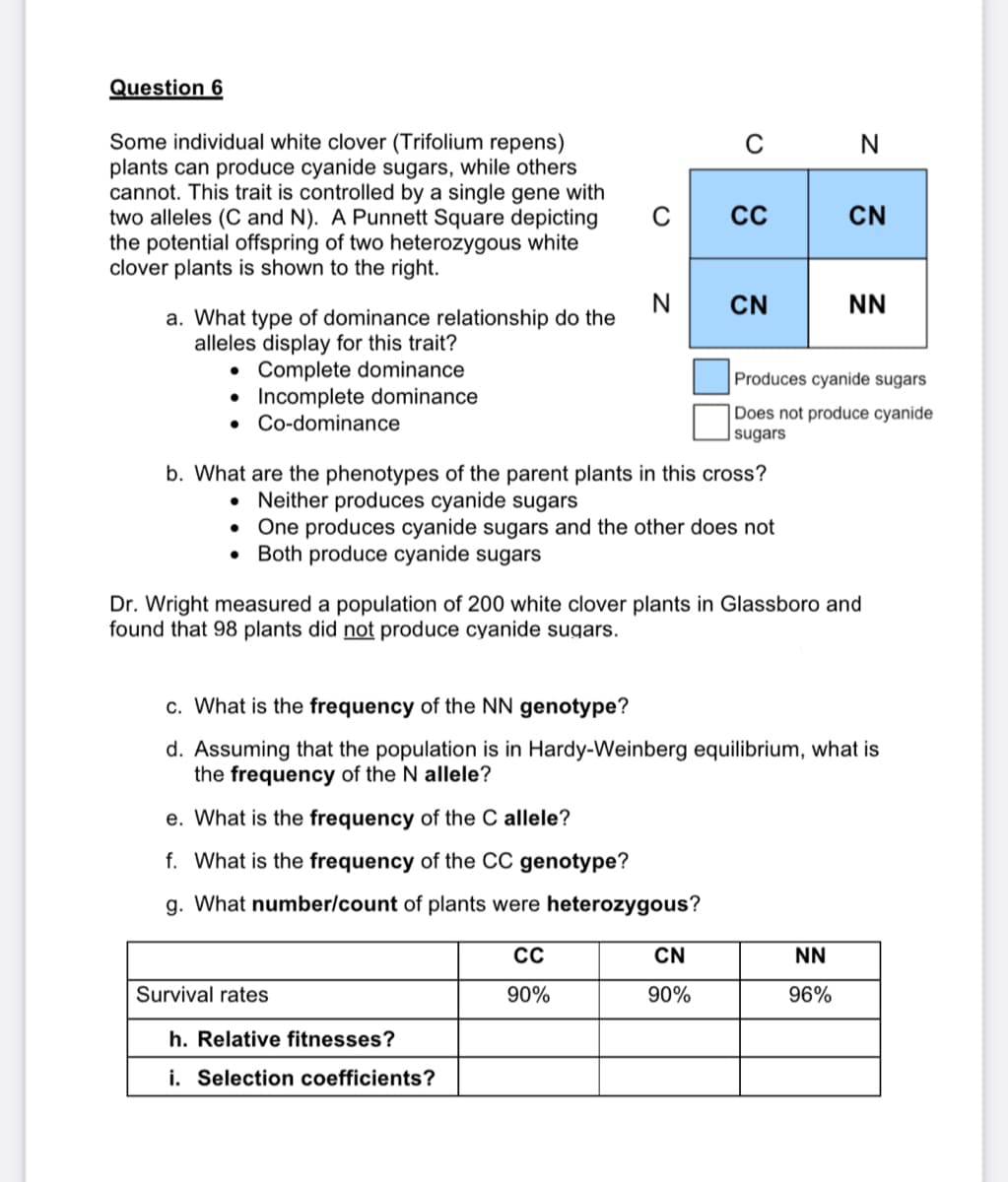Question 6 Some individual white clover (Trifolium repens) plants can produce cyanide sugars, while others cannot. This trait is controlled by a single gene with two alleles (C and N). A Punnett Square depicting the potential offspring of two heterozygous white clover plants is shown to the right. C N C CC CN CN NN a. What type of dominance relationship do the alleles display for this trait? • Complete dominance • Incomplete dominance • Co-dominance Produces cyanide sugars Does not produce cyanide |sugars b. What are the phenotypes of the parent plants in this cross? • Neither produces cyanide sugars • One produces cyanide sugars and the other does not • Both produce cyanide sugars Dr. Wright measured a population of 200 white clover plants in Glassboro and found that 98 plants did not produce cyanide sugars. c. What is the frequency of the NN genotype? d. Assuming that the population is in Hardy-Weinberg equilibrium, what is the frequency of the N allele? e. What is the frequency of the C allele? f. What is the frequency of the CC genotype? g. What number/count of plants were heterozygous? CN NN Survival rates 90% 90% 96% h. Relative fitnesses? i. Selection coefficients?
Anatomy and Physiology of Special Sensory Organs
Sensory organs can be labeled as special sensory structures that permit sight, hearing, odor, and flavor. Sensory structures permitting proprioception, touch, thermal, and pain perception can be classified as more advanced sensory organs. The sensory neurons are trained to find out modifications in the external and internal conditions so that a person's body can react to that change. A stimulus is the first signal that is recognized by any sensory receptor of the body. Stimulus is an impulse generated when there is a change in the surroundings of a person. For example, a heated environment will alert the brain through the thermal sensory organs and generate a reflex accordingly.
Sensory Receptors
The human sensory system is one of the most complex and highly evolved structures, which processes a myriad of incoming messages. This well-coordinated system helps an organism or individual to respond to external stimuli, appropriately. The sensory receptors are an important part of the sensory system. These receptors are specialized epidermal cells that respond to external environmental stimuli. These receptors consist of structural and support cells that form the peripheral unit of the receptor and the neural dendrites which receive and detect the external stimuli.

Trending now
This is a popular solution!
Learn your way
Includes step-by-step video
Step by step
Solved in 4 steps









